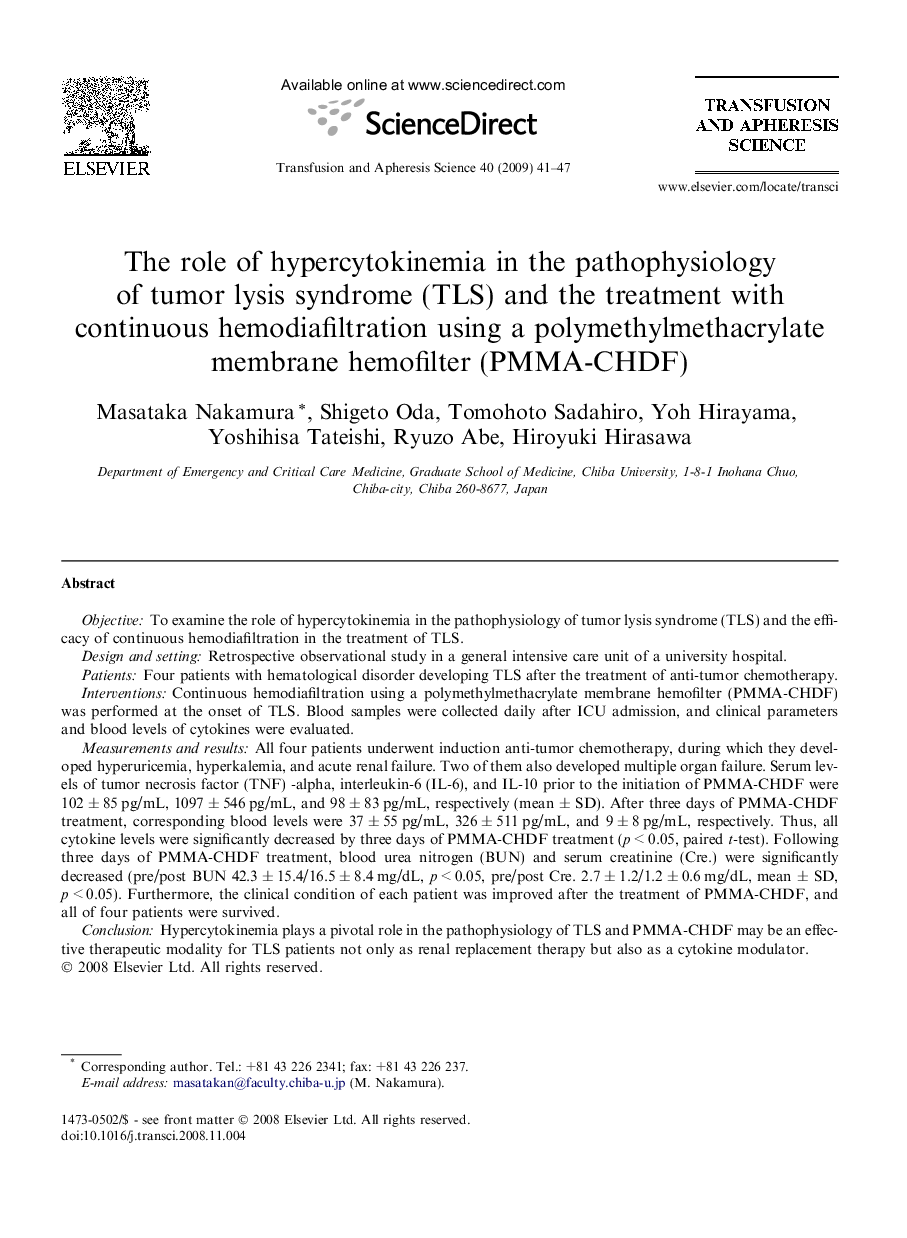| کد مقاله | کد نشریه | سال انتشار | مقاله انگلیسی | نسخه تمام متن |
|---|---|---|---|---|
| 3336100 | 1213557 | 2009 | 7 صفحه PDF | دانلود رایگان |

ObjectiveTo examine the role of hypercytokinemia in the pathophysiology of tumor lysis syndrome (TLS) and the efficacy of continuous hemodiafiltration in the treatment of TLS.Design and settingRetrospective observational study in a general intensive care unit of a university hospital.PatientsFour patients with hematological disorder developing TLS after the treatment of anti-tumor chemotherapy.InterventionsContinuous hemodiafiltration using a polymethylmethacrylate membrane hemofilter (PMMA-CHDF) was performed at the onset of TLS. Blood samples were collected daily after ICU admission, and clinical parameters and blood levels of cytokines were evaluated.Measurements and resultsAll four patients underwent induction anti-tumor chemotherapy, during which they developed hyperuricemia, hyperkalemia, and acute renal failure. Two of them also developed multiple organ failure. Serum levels of tumor necrosis factor (TNF) -alpha, interleukin-6 (IL-6), and IL-10 prior to the initiation of PMMA-CHDF were 102 ± 85 pg/mL, 1097 ± 546 pg/mL, and 98 ± 83 pg/mL, respectively (mean ± SD). After three days of PMMA-CHDF treatment, corresponding blood levels were 37 ± 55 pg/mL, 326 ± 511 pg/mL, and 9 ± 8 pg/mL, respectively. Thus, all cytokine levels were significantly decreased by three days of PMMA-CHDF treatment (p < 0.05, paired t-test). Following three days of PMMA-CHDF treatment, blood urea nitrogen (BUN) and serum creatinine (Cre.) were significantly decreased (pre/post BUN 42.3 ± 15.4/16.5 ± 8.4 mg/dL, p < 0.05, pre/post Cre. 2.7 ± 1.2/1.2 ± 0.6 mg/dL, mean ± SD, p < 0.05). Furthermore, the clinical condition of each patient was improved after the treatment of PMMA-CHDF, and all of four patients were survived.ConclusionHypercytokinemia plays a pivotal role in the pathophysiology of TLS and PMMA-CHDF may be an effective therapeutic modality for TLS patients not only as renal replacement therapy but also as a cytokine modulator.
Journal: Transfusion and Apheresis Science - Volume 40, Issue 1, February 2009, Pages 41–47